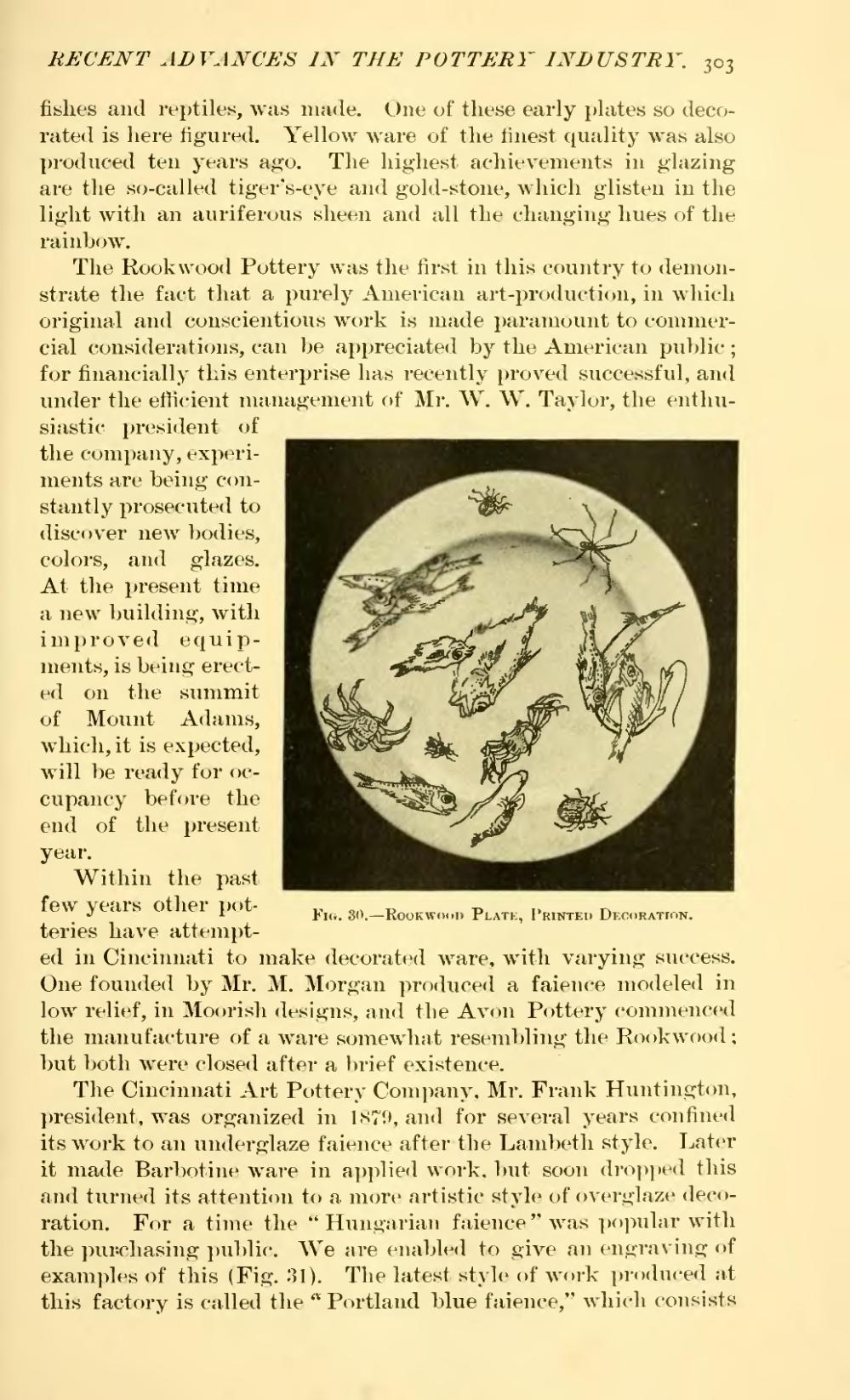fishes and reptiles, was made. One of these early plates so decorated is here figured. Yellow ware of the finest quality was also produced ten years ago. The highest achievements in glazing are the so-called tiger's-eye and gold-stone, which glisten in the light with an auriferous sheen and all the changing hues of the rainbow.
The Rookwood Pottery was the first in this country to demonstrate the fact that a purely American art-production, in which original and conscientious work is made paramount to commercial considerations, can be appreciated by the American public; for financially this enterprise has recently proved successful, and under the efficient management of Mr. W. W. Taylor, the enthusiastic  Fig. 30.—Rookwood Plate, Printed Decoration. president of the company, experiments are being constantly prosecuted to discover new bodies, colors, and glazes. At the present time a new building, with improved equipments, is being erected on the summit of Mount Adams, which, it is expected, will be ready for occupancy before the end of the present year.
Fig. 30.—Rookwood Plate, Printed Decoration. president of the company, experiments are being constantly prosecuted to discover new bodies, colors, and glazes. At the present time a new building, with improved equipments, is being erected on the summit of Mount Adams, which, it is expected, will be ready for occupancy before the end of the present year.
Within the past few years other potteries have attempted in Cincinnati to make decorated ware, with varying success. One founded by Mr. M. Morgan produced a faience modeled in low relief, in Moorish designs, and the Avon Pottery commenced the manufacture of a ware somewhat resembling the Rookwood; but both were closed after a brief existence.
The Cincinnati Art Pottery Company, Mr. Frank Huntington, president, was organized in 1870, and for several years confined its work to an underglaze faience after the Lambeth style. Later it made Barbotine ware in applied work, but soon dropped this and turned its attention to a more artistic style of overglaze decoration. For a time the "Hungarian faience" was popular with the purchasing public. We are enabled to give an engraving of examples of this (Fig. 31). The latest style of work produced at this factory is called the "Portland blue faience," which consists
